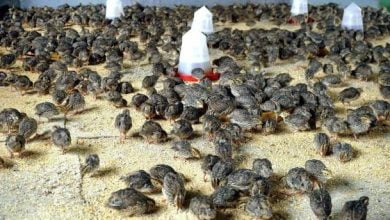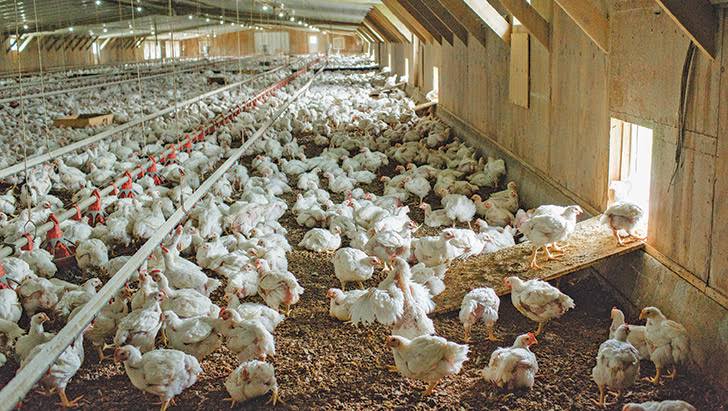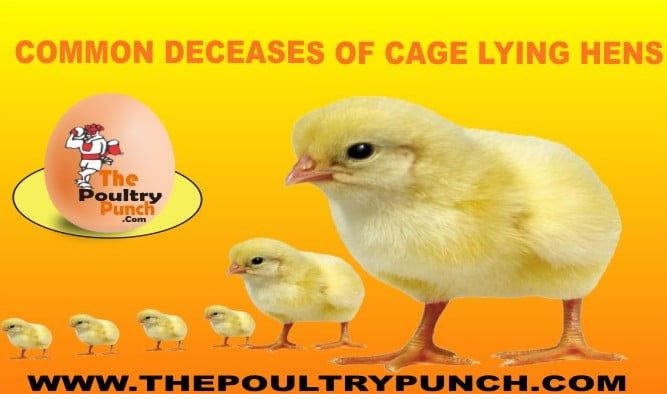Prevention and Control of Salmonella infection in poultry
Jagmeet Kaur
Department of Veterinary Pathology
Khalsa College of Veterinary and Animal Sciences, Amritsar
Introduction
Salmonellosis is one of the most common foodborne bacterial infections worldwide. It is caused by host specific and non host specific Salmonella in poultry. Host specific infections include Pullorum disease and Fowl typhoid, whereas non specific include infection by Salmonella Enteritidis and Salmonella Typhimurium. Salmonella infection in poultry leads to huge economic loss. As Salmonellosis can be transmitted to humans, the presence of Salmonella in poultry and poultry products also hinder international trade. Therefore prevention and control measures are necessary to prevent significant losses caused by this disease. In addition, as it
- Pullorum Disease
Pullorum disease is a septicemic poultry disease caused by gram negative bacteria Salmonella Pullorum.Previously known as Bacillary white diarrhoea.
It causes disease in young chickens within first 2-3 weeks of age. Disease is less common in adult chickens, if present, mortality is high but there are no clinical signs frequently. The transmission of disease occurs through oral route or through navel/yolk. It can also be vertically transmitted. Recovered hen typically passes on the bacteria to one third of her eggs.
Clinical findings
- Affected birds appear weak
- Huddle near a heat source
- Havecharacteristic white pasted vent
- Anorectic
- Birds may die shortly after hatching
- Sometimes they make shrill chirping and peeping sounds
Gross lesions
Theseare seen in chronic conditions, but are mostly absent in peracute cases. There will be yolk sac retention, enlargement and congestion of liver, spleen and kidneys. Sometimes caseous cores may be seen in caeca.
- Fowl Typhoid
The causal agent is Salmonella Gallinarum. It is also transmitted vertically. Horizontal transmission occurs by feco-oral route or by egg eating. S.Gallinarumcan cause disease in birds of any age, but has a tendency to spread among growing or mature flocks. Chickens are mostly affected but it can affect other poultry birds also viz., turkey, game birds, sparrows, parrots and guinea fowls.
Clinical findings
- Depression
- Ruffled feathers
- Inappetance
- Yellow diarrhoea
- Reluctance to move
- Death of birds occur in upto 90% of cases
Gross lesions
On post-mortem examination, bronzed enlarged liver with small necrotic foci or congestion was found. Other lesions include engorgement of kidneys and spleen, anemia and enteritis. Yolk sac retention may also occur, with yolk sac appearing creamy or caseous.
- Fowl Paratyphoid
Fowl paratyhoid is a non-host specific infection of poultry which is responsible for Salmonella-food poisoning in humans. Salmonella enteritidis and Salmonella typhimurium are non-host specific Salmonella of poultry.
Transmission occurs directly from infected birds, contaminated environments or infected rodents. Infected birds remain carrier. Management and environmental factors that cause stress to the birds compromise bird’s ability to resist infection and increase vulnerability in developing clinical disease.
Clinical findings: Mortality is seen mostly in the first few weeks of age.
The main symptoms of the disease are:
- Depression
- Poor growth
- Weakness
- Diarrhoea
- Dehydration
- Droopy wings
- Constant chirping noises
- Wollen joints
- Purplish colored comb and wattles
Gross lesions
Lesions include enlarged liver with necrosis, unabsorbed yolk sac and enteritis with necrotic lesions.
- Diagnosis of Salmonella: Diagnosis can be made from
- History
- Clinical signs
- Necropsy
- Isolation and identificationof organism: Isolation of Salmonella is mainly done from intestinal tract and its contents. However, ovary, spleen, liver, yolksac, heart, kidney, gall bladder, joint, fluid/pus and eyes can also be cultured as a part of post-mortem examination.Direct plating on Brilliant Green, Mac Conkey and on non-selective agar can be done.
- Serological tests: Standard serological tests like tube and rapid plate agglutination tests can be performed.
- Prevention and Control
- Eggs should be cleaned and disinfected or fumigated before hatching.
- Day old chicks should be bought from Salmonella-free breeder flocks in which no evidence of Salmonella has been detected.
- Chlorinated drinking water should be given to birds ideally, if not provide water from a clean drinking source.
- Monitor the Salmonella status of poultry feed because feed contaminated with Salmonella is known to be a source of infection for poultry. Heat treated feed with or without addition of other bactericidal or bacteriostatic treatments are recommended.
- Vaccination: In some areas, vaccines both live and attenuated have been used to control the infection. Vaccination can be used as an overall Salmonella control programme.
- Depending upon animal health, and risk assessment, culling is an option to manage infected breeder and layer flocks. Infected flocks should be destroyed or slaughtered and processed to minimise human exposure.
- Litter of infected birds should not be reused. Used poultry litter, carcass and other contaminated farm waste should be transported and disposed off in safe manner to prevent direct or indirect contact of humans, livestock and other to Salmonella.
- Proper care should be taken in cleaning and disinfection of the poultry house and equipment.
- If disease is introduced, control should focus on eradication of disease through isolation and destruction of contaminated flocks, proper disposal of carcass and disinfection of fomites.


